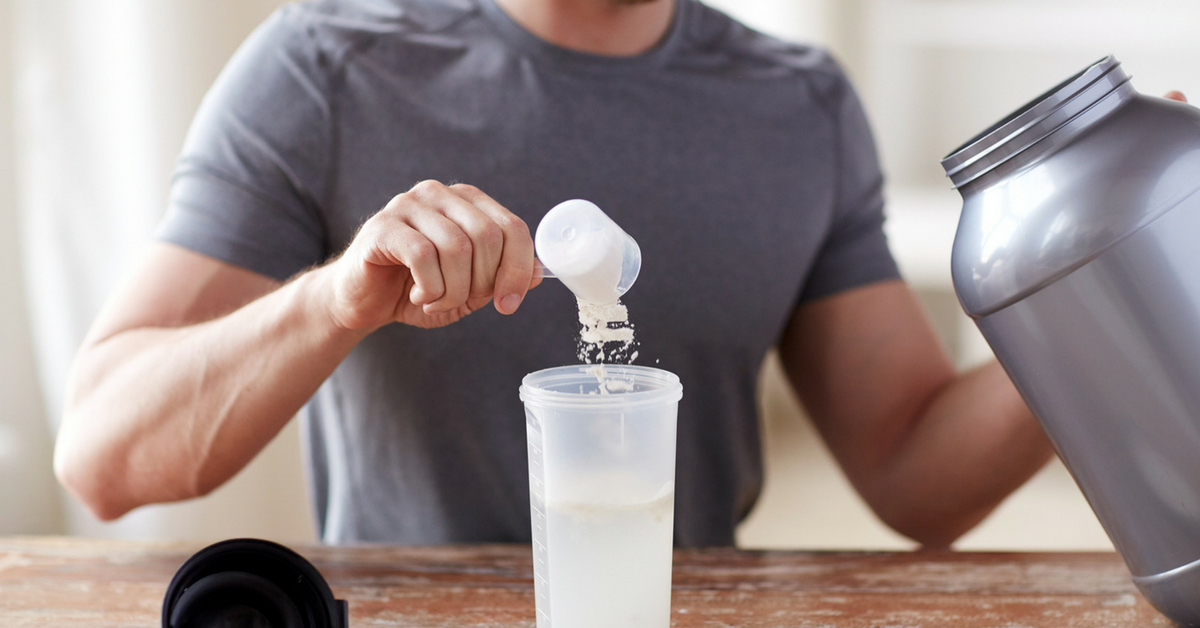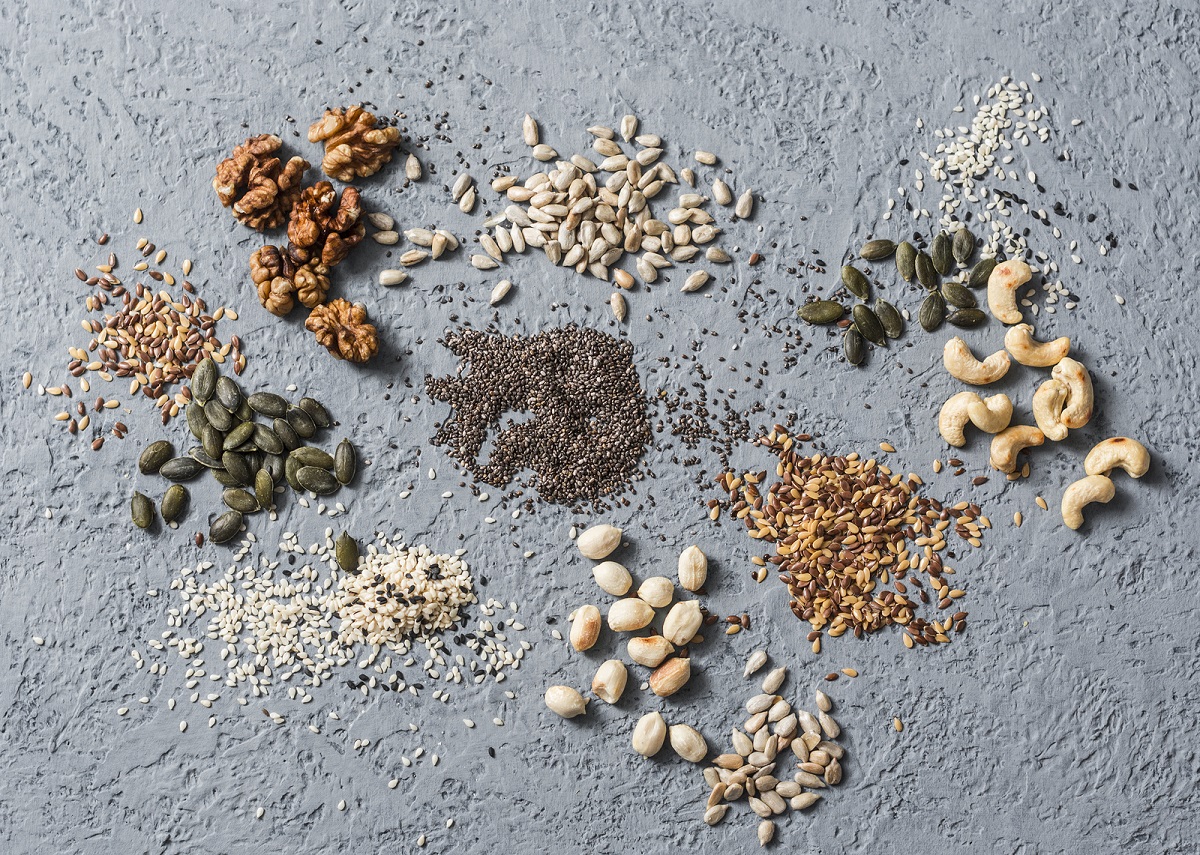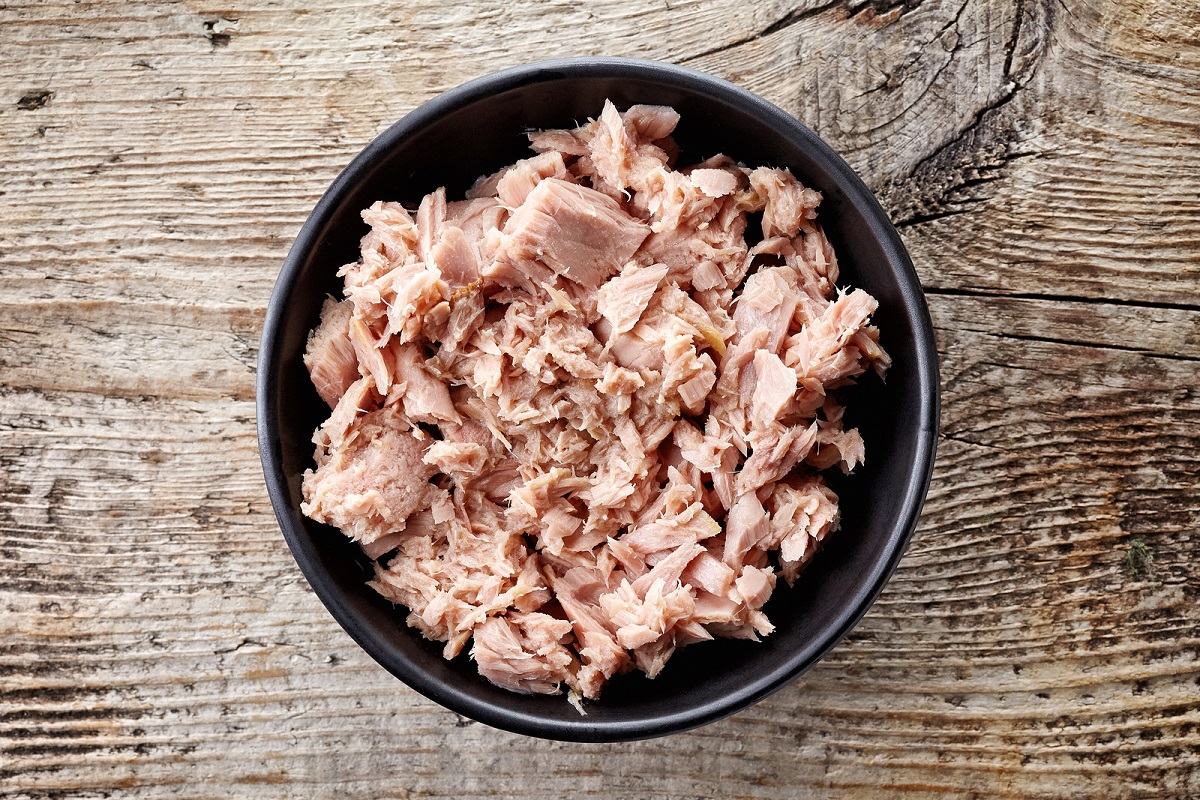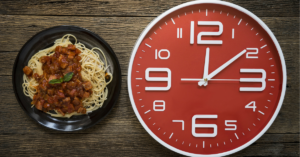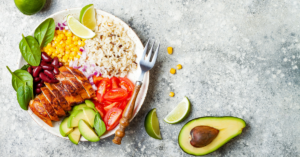We live in a world where we tend to rush around like a chicken with its head chopped off—minus the gore and awkward flailing.
At the sound of our alarm clock we hop out of bed, jump in the shower, dry off, throw our clothes on, brush our teeth and hair, wake up the kids, clothe them, make them breakfast, make yourself breakfast, rush everyone out the door to catch the school bus, and then off to work you go. Phew. It’s exhausting just thinking about it.
There are days where you simply don’t have time to sit down and eat breakfast yourself, I get it. And for that reason, you need to ensure you have high protein snacks at your disposal. At IIFYM, we love protein and try to fit it into all of our meals and snack options.
As science tells us, protein is the building blocks for muscle growth and recovery. More specifically, it’s the amino acids found in protein that are the true champions at maintaining and building that hard-earned lean muscle mass we all strive for.
(A great place to find out your needed protein intake to help you achieve either goal is Macro Calculator.)
We understand how frustrating it is to lose your muscle mass, and for that reason, we want you to utilize not only what’s in this article, but also the programs we have on the IIFYM website.
The Requirements For These Snacks
When looking at high protein snacks, you want something that can be transported easily and without the worry of making a mess. If you’ve ever tried to eat breakfast in the car, you know spilling it all over your suit or work clothes is not a good look, nor a good start to your day.
When we talk about high protein snacks here at IIFYM, we are looking for something that is prepackaged if possible, obviously sealable and preferable re-sealable, and something that provides that lovely macronutrient that we call protein.
Below in this IIFYM article, you will find our picks for the most delicious high protein snacks out there.
These items can be purchased at a convenience store/gas station if on the go, at a grocery store if you’re planning for the week, or it could even be an item that you already have stocked at your house and can pack in your briefcase or bag prior to heading out the door.
1. Protein Bars
Let’s start off with one of the most convenient high protein snacks available today. There is no shortage of protein bars out on the market, and these little gems can be found just about anywhere.
If you are hitting a gas station but are in the mood for high protein snacks to hold you over until your next meal, you will probably find over 10 different flavors or varieties there.
Quest bars, MET-Rx bars, Pure Protein bars, Balance bars, Muscle Milk bars, Crunch bars, the list goes on and on. Here’s the thing, not all protein bars are created equal.
You will find some that are high in protein and high in carbohydrates. You will find some that are high in protein and low in carbohydrates. The key is to figure out what bars fit your diet (for example if you’re following the IIFYM diet).
Some flavor options are Cookie Dough, Chocolate Peanut Butter, Strawberry Shortcake, Peanut Butter & Jelly, Chocolate Mint, Apple Pie, and pretty much any imaginable flavor you can think of.
Again, decide which flavor appeals to your taste buds and matches your IIFYM plan and you have yourself prepackaged high protein snacks that contain anywhere from 12g of protein to upwards of 32g.
You can also find protein bars at big box stores such as Walmart, Target, Costco, Sam’s Club, and even in grocery stores. If you want a little more variety, head to a supplement or nutrition store and they should have a better selection of flavors and brands.
2. Protein Shakes
Another option that many people find convenient would be protein shakes. These can either be in an RTD (Ready-To-Drink) form or as a powder from a tub you can purchase.
The mixture is generally either water or milk-based (whichever you prefer to consume).
Likewise, with the powdered version, you have the ability to either pour milk or water in a shaker bottle or blender along with your powdered protein of choice and on with your day you go.
No matter the variety of making your own shake or opening a can/bottle, you will have high protein snacks at your disposal.
I will say this though, if you like to control your macros like we do with the IIFYM plan, utilizing a protein powder will be advantageous over an RTD. The powdered variety allows you to add different macros to fit your IIFYM lifestyle. Need more fats? Throw some natural peanut butter in your shake.
Need more carbs or maybe you want it for post-workout? Toss in a banana and you’re good to go. Like with protein bars, you can find a wide variety of flavors to choose from.
Many people will stick with a vanilla or chocolate since they are pretty standard and allows them to manipulate their macros fairly easy when compared to trying to adjust macros with a flavor such as chocolate mint or a buttermilk pancake flavor.
RTD protein shakes can be found at gas stations, convenience stores, and grocery stores. You can even find them in the coolers of gyms and supplement/nutrition stores. If protein powder sounds more like your preference, you can find them at grocery stores and big-box locations like Target, Walmart, Costco, etc.
The locations with the most variety, however, will always be a supplement or nutrition store. If the price is a concern, the powder will always be less expensive than an RTD simply because you are paying for convenience and individual packaging with an RTD.
When looking for super high protein snacks, protein shakes generally can give you the best bang for your buck in terms of cost per gram of protein in your IIFYM nutrition plan.
3. Jerky
Do you like meat? IIFYM users like meat! And jerky makes high protein snacks a breeze. I’m going to leave this pretty open-ended with the type of jerky you choose.
Some people like beef jerky, some like turkey, while others prefer deer, bison or ostrich. It totally comes down to personal preference.
While jerky is high in sodium, if you are in a pinch, jerky can be a lifesaver. For instance, if you find yourself at an airport and none of the places to eat there look like anything worth consuming, you can always find some type of jerky in one of the stores around your terminal.
You can also find jerky at every gas station and convenience store—it’s pretty much a staple there as one of the high protein snacks.
Another key to jerky is that most of the bags you purchase can be sealed back up if you don’t eat it all. This ensures your jerky doesn’t further dry out or go bad on you (or dump out) while you’re on the go.
4. Nuts/Seeds
Looking for high protein snacks that will also help give you some good fats in your diet? You can’t go wrong here. Almonds, pistachio nuts, pumpkin seeds, sunflower seeds, walnuts, I could keep going on with these amazing snack items.
Grab yourself a container of nuts/seeds and keep it at the office and another at home. You could even purchase a container that is a mix of nuts and seeds to keep your taste buds happy with some variety.
You can purchase nuts and seeds at all of the places we have already mentioned in the sections above. They are pretty standard and therefore are easily accessible at just about any location you hop into if you find yourself in a tight spot and in need of some quick protein. These high protein snacks will also help you feel satiated throughout the day.
It should go without saying, but we at IIFYM like to err on the safe side, so if you are allergic to nuts or seeds it would be wise to skip over this option and find one that would not cause any health issues.
Here at IIFYM, we love the use of nuts in our diet. They are a quick and easy source of protein and healthy fats that can be added to any IIFYM diet. Yet, be aware of how high the fat content is within one portion, it’s easy to get carried away and end up consuming a lot of calories.
With that said, if you are unsure how to utilize the IIFYM lifestyle, be sure to check out the calculators, programs, articles, and FAQ sections of the IIFYM website.
5. Hummus/Chickpeas
Some people look at the word hummus and think it’s a funny sounding word—and they’re right.
However, hummus is one of the high protein snacks that I think many people forget about or overlook. Hummus can be spread on just about anything you can think of—crackers, vegetables, toast, whatever.
Hummus is simply mashed up chickpeas. And speaking of chickpeas, they can’t be forgotten on our list. Have you ever had roasted chickpeas?
Delicious! You can add your favorite seasonings to them or keep them in their natural state—either way, this is a home run when it comes to high protein snacks.
Hummus can be found just about anywhere. Grocery stores, convenience and gas stations, or you can make your own at home and take it with you.
Some places even have hummus in a prepackaged container with vegetables ready to consume. So, when in a pinch, don’t forget about hummus.
When it comes to chickpeas, you generally need to purchase those at a grocery store if you wanted to make your own roasted chickpeas and package them up for travel. The good news is, roasted chickpeas take no time at all to make and you can do a large batch all at once.
6. Canned Tuna/Chicken
While not on everyone’s list of the most amazing tasting snack options, canned tuna or chicken can definitely fit the bill when you are in need of high protein snacks on the go.
If you are a fan of tuna, you can find it in a can or in premade pouches pretty much anywhere—grocery stores, gas stations, and convenience stores. Not a fan of tuna? They have a chicken variety as well.
These high protein snacks are a great way to consume some good quality protein in no time at all. Some of the packages available even come with crackers that you can spread the protein source out on.
Other varieties are flavored with different spices so it isn’t so bland to eat. Rather than skipping lunch while on the go or pulling up to a fast food restaurant, grab yourself some canned tuna/chicken and you have a convenient way to stay on your diet while staying busy and productive.
Our coaches here at IIFYM.com can help you with the variety of foods you consume and can provide you with more protein options to fulfill your intake should you need assistance.
7. Greek Yogurt
I saved the newest craze for last. Greek yogurt has some amazing properties other than being one of our most delicious high protein snacks on the list. This option not only allows you the convenience of a packaged protein source, but Greek yogurt also supplies you with calcium and probiotics.
There’s so much winning going on with Greek yogurt that you should have this in your refrigerator whether you are using it for on the go or not.
You need to take note though, while Greek Yogurt is incredibly healthy, depending on the variety you purchase, it could be high in sugars and carbohydrates if it is full of fruit or other carbohydrates like a granola topping. If that fits in your IIFYM diet, you’re good to go.
Yet, we wanted to make sure you didn’t start scarfing down these high protein snacks without knowing the potential consequences if you aren’t looking at the nutrition label (which you should be doing).
Changing It Up
If you wanted to spice up your macros a little bit, you could add some granola (like mentioned above) to your Greek yogurt to play with the macros yourself rather than being forced to consume whatever the fruit variety of some yogurt gives you. This also allows you to get a plain vanilla flavor and add your own fruit if you wish.
Greek yogurt can be found everywhere and can easily fit into your IIFYM diet. The trend has been so hot that even gas stations and convenience stores are stocking Greek yogurt.
Another fun fact is, you don’t always need a spoon to eat your yogurt which is extremely convenient if you are indeed on the go and in your car. You can’t afford to use both hands to eat while driving, and you don’t want to risk spilling yogurt all over your clothing.
The solution? Some brands have “drinkable” Greek yogurt that comes in a bottle that has a screw top.
If you are having trouble finding a diet that works for your lifestyle, you’ve come to the right place. IIFYM.com is the best source of information not only to help educate you, but IIFYM also has a ton of amazing programs that you can choose from to help you reach your goals.
The post 7 High Protein Snacks for Those On The Go appeared first on IIFYM.
from IIFYM Recipes and Articles – IIFYM http://ift.tt/2GREVmg
